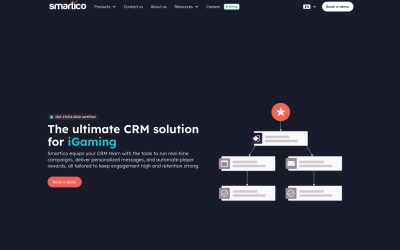As you navigate the vast ocean of SEO, subdomains can be both a beacon of opportunity and a potential siren’s call, leading you astray. You’ve likely pondered whether deploying a subdomain will bolster your site’s relevance or inadvertently dilute your digital presence.
It’s a nuanced battlefield, where the right strategy can make all the difference between sinking or swimming in the search engine rankings. As you weigh the pros and cons, consider how subdomains in SEO strategies can affect your link equity and content organization, and what it means for your overall online authority.
Just when you think you’ve got a grip on the rules, you’ll find there’s more to uncover about how subdomains interact with the core domain and the cascading impact this relationship has on your SEO efforts.
What lies ahead are insights and strategies that could tip the scales in your favor, but are you ready to dissect them to chart your course to success?
Key Takeaways
- Subdomains can be a useful tool for organizing and categorizing content within a website without the need to create a completely separate website.
- Search engines recognize subdomains as distinct entities, giving them the potential to rank independently in search results.
- Subdomains can be customized for different regions or services, allowing for targeted marketing and audience segmentation.
- However, it is important to carefully consider the impact on user experience, potential dilution of domain authority, and the requirement for sufficient content before implementing subdomains.
Take Your Online Success to New Heights with Rankstar SEO Services
Are you ready to outshine your competitors and enhance your online presence? Look no further than Rankstar, where our expertise in SEO is your gateway to achieving digital excellence. With a dedicated team fueled by passion and precision, we are driven to deliver not just results but transformative growth for your brand.
At Rankstar, we embody innovative thinking, strategic planning, and cutting-edge SEO techniques to ensure your business stands out in the ever-evolving digital landscape. We understand the unique challenges and opportunities your business faces, and we’re here to guide you every step of the way towards achieving your online goals.
Join the elite circle of success stories and see your vision come to life with Rankstar. Connect with us today and begin your journey to the top of search engine results, where your brand truly belongs!
Our SEO services also include:
- SEO Audit
- Professional SEO Services
- Link Building
- SEO Web Development & Design
- Online Reputation Management
- Autosuggest Creation
- Autosuggest Removal
- Google Penalty Recovery Services
- Conversion-Rate Optimization
- Topical Map Services

Defining the Place of Subdomains in SEO
Understanding what subdomains are and how they function is crucial to effectively leveraging subdomains in SEO strategy. Subdomains act as separate branches of your main domain, allowing you to organize content without creating a whole new website. They’re recognized by search engines as distinct entities, which means they’ve the potential to rank independently in search results.
Think of your main domain as a tree; subdomains are the branches that stem from the trunk—each with its own leaves, or content. For example, ‘shop.example.com’ is a subdomain of ‘example.com’, tailored specifically for e-commerce. They’re especially handy when you’re targeting different regions or offering varied services, as they can be customized to suit those particular needs.
However, it’s not all smooth sailing. Utilizing subdomains in SEO can dilute your efforts if not managed properly. Since search engines see them as separate sites, you’ll need to build authority for each one from scratch. This means doubling your SEO workload and ensuring consistent high-quality content across all platforms.
The Pros and Cons of Subdomains in SEO
When evaluating the role of subdomains in SEO strategies, it’s essential to weigh their potential benefits against the drawbacks they may bring.
On the plus side, subdomains can help you organize complex websites. If you’re managing a large site with diverse content, creating a subdomain for each section can make your site more navigable for users and search engines. This clarity can lead to an improved user experience and potentially better rankings for each section.
Subdomains in SEO also allow for branding opportunities. You might use a subdomain to highlight a particular product line or campaign, setting it apart from the rest of your content. This separation can make it easier to track the success of specific marketing efforts.
However, utilizing subdomains in SEO isn’t without their downsides. They can dilute your domain authority because search engines might treat them as separate entities from your main domain. This means you’ll have to build up the authority of each subdomain independently, which can be a significant investment of time and resources.
Moreover, if you don’t have enough content to justify a subdomain, it could spread your efforts too thin, negatively impacting your SEO. You’ll need to consider if the organizational benefits outweigh the potential risk of diluting your site’s overall authority.
Key Considerations When Implementing Subdomains in SEO
Considering the mixed roles of subdomains in SEO, it’s crucial to thoroughly examine several key factors before integrating them into your website structure. First, you’ve got to ask yourself if there’s a genuine need for a subdomain. Is your content diverse enough to warrant a separate hub? Also, consider the user experience—will a subdomain enhance or confuse the navigation?
It’s essential to weigh the potential benefits given by subdomains in SEO against the risks. Here’s a concise table to help you visualize some of these considerations:
| Consideration | Benefit | Risk |
|---|---|---|
| Content Categorization | Enhanced organization of topics | Possible dilution of authority |
| Audience Segmentation | Targeted marketing efforts | Risk of creating duplicate content |
| Technical Requirements | Customization options for subdomain | Complexity in setup and maintenance |
Strategies for Optimizing Subdomains for Search Engines
To effectively boost your subdomain’s visibility in search engine results, you’ll need to employ a tailored set of subdomains in SEO strategies. Start by conducting thorough keyword research. Identify terms that are relevant to your subdomain’s content and incorporate them into your URLs, titles, and headers. Remember, your subdomain should have a clear focus, so choose keywords that reflect its specific niche.
Create high-quality, original content that provides value to your audience. Search engines favor content that engages users and answers their queries. Use multimedia elements like images and videos to enhance user experience and increase the time visitors spend on your site, which can positively impact your search rankings.
Ensure that your subdomain’s technical SEO is on point. This means improving load times, making sure it’s mobile-friendly, and implementing SSL certificates for security. Your site’s architecture should facilitate easy navigation, both for users and search engine crawlers.
Don’t forget to build authoritative backlinks to your subdomain. Reach out to reputable sites for guest blogging opportunities and actively engage in community discussions within your niche. Quality backlinks can significantly boost your subdomain’s authority and search ranking.
Lastly, regularly monitor your subdomain’s performance using analytics tools. Adjust your strategies based on the data to continually optimize for search engines.
Link Building and Authority Sharing Between Main Domains and Subdomains
Harnessing the power of link building can significantly strengthen the relationship between your main domain and subdomains, bolstering the performance of both main domains and subdomains in SEO. When you secure high-quality backlinks for your subdomains, you’re not just boosting their authority; you’re also funneling some of that clout back to your main domain. This symbiotic relationship allows for a strategic distribution of link equity, which can enhance your overall digital presence.
But here’s the catch: you’ve got to do it right. Aim for natural links that make sense contextually, and don’t overdo it with aggressive link exchanges or you’ll risk penalties. Think of your main domain as the central hub and your subdomains as spokes – all contributing to the wheel’s strength but serving unique purposes.
Subdomains Versus Subdirectories: The SEO Showdown
When deciding where to house your website’s content, you’ll face the pivotal SEO showdown between subdomains and subdirectories, each with its own impact on search rankings. Understanding their differences is key to optimizing your site’s structure for search engines and users alike.
Here’s what you need to know:
- Authority Concentration: Subdirectories tend to consolidate your site’s authority since they’re seen as part of the main domain. A subdomain, meanwhile, is often treated as a separate entity, which can dilute your site’s overall authority.
- Content Relevance: Subdirectories are generally better for content that’s closely related to your main site, enhancing thematic relevance and potentially aiding your SEO efforts. Subdomains can be beneficial when you’re hosting content that’s distinct from your main offerings, like a separate blog or an e-commerce platform.
- Ease of Management: With subdirectories, management is straightforward because they fall under the same domain. Subdomains can require additional maintenance, as they often need separate site setups.
- Link Equity: Links to a subdirectory help build the main domain’s link equity. Conversely, links to a subdomain may not always pass the same level of equity to the primary domain, potentially impacting your subdomains in SEO strategy.
Choose wisely, as the structure you select can influence your website’s search engine performance and user experience.
Measuring Subdomain Performance
You’ll need to track your subdomain’s analytics with precision to understand its impact on your overall SEO performance. Start by setting up specific goals in your analytics tools for the subdomain. This could include tracking conversions, bounce rates, or page views. Ensure you’re differentiating between the main domain and subdomain data to get a clear picture.
Next, monitor organic traffic. Look at the number of visitors coming from search engines and compare it to your main domain. Is the subdomain attracting its own audience, or is it possibly cannibalizing traffic from your primary site? Understanding these dynamics is crucial for fine-tuning your SEO strategy.
Don’t overlook backlinks. They’re a strong indicator of the subdomain’s authority. Use SEO tools to analyze the quantity and quality of backlinks pointing to your subdomain. A growing number of high-quality backlinks suggests your content is valuable and authoritative.
Frequently Asked Questions
How Do Search Engine Algorithms Treat Content Duplication Across Subdomains Compared to Across Different Domains?
You’re wondering how search engines handle duplicate content on subdomains versus different domains. They typically treat subdomains like separate sites, so duplication can hurt your SEO just as across unrelated domains.
Can the Use of Multiple Subdomains Lead to a ‘Split’ in Brand Identity, and How Does That Affect User Perception and Seo?
Yes, using multiple subdomains can split your brand identity, potentially confusing users and diluting SEO efforts. It’s crucial to maintain a cohesive strategy to ensure a strong, unified online presence.
Are There Specific Industries or Types of Websites That Benefit More From Using Subdomains in SEO?
Yes, you’ll find that content-heavy sites, like news outlets, and those with distinct brand segments, such as multinational corporations, often benefit more from using subdomains in SEO for their SEO strategies.
How Does the Use of Internationalized Domain Names (IDNs) With Non-Latin Characters in Subdomains Affect Seo?
You’ll find that using IDNs with non-Latin characters in subdomains can affect SEO by potentially limiting global reach and complicating search engine indexing, even though they’re essential for local language relevance.
What Is the Impact of Server Location on the SEO of a Subdomain, Especially if the Subdomain Targets a Different Geographical Audience Than the Main Domain?
Your subdomain’s server location can affect its SEO, particularly if you’re targeting a different geographical audience than your main domain. Closer servers usually mean faster load times and potentially better local search rankings.
Conclusion
You’ve navigated the subdomain maze, weighing the pros and cons of subdomains in SEO impact. Now, armed with strategies to optimize and link build, you’re ready to decide between subdomains and subdirectories.
Remember, it’s crucial to track your subdomain’s performance to ensure your efforts pay off. With the right approach, utilizing subdomains in SEO can enhance your digital presence.
So go ahead, apply these insights, and watch your site’s authority and relevance soar.



































